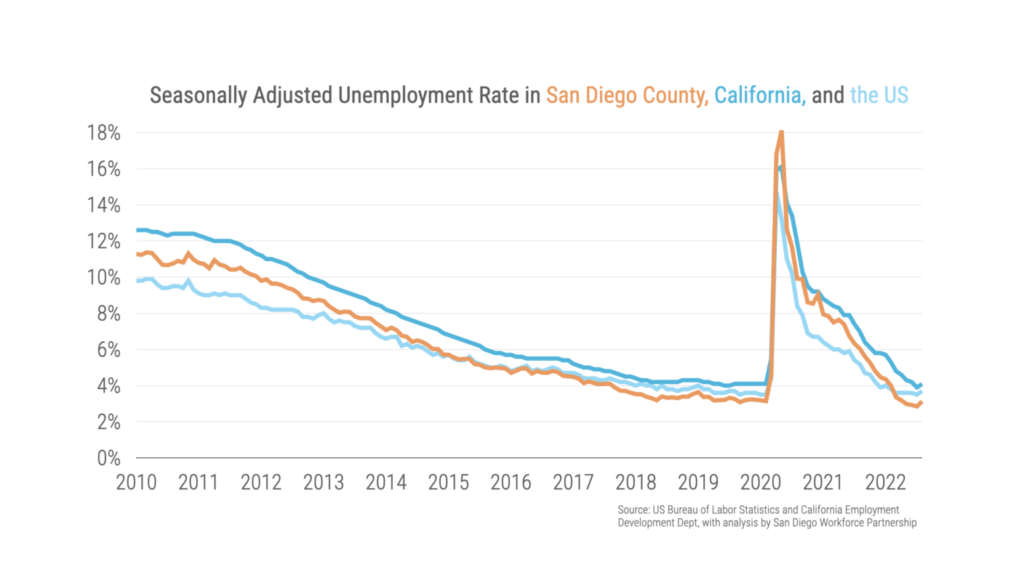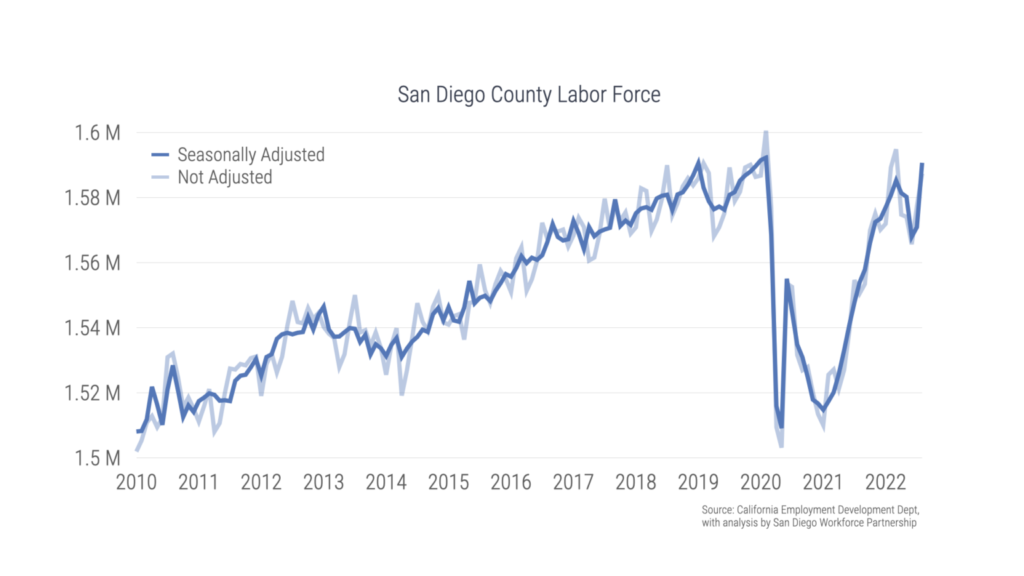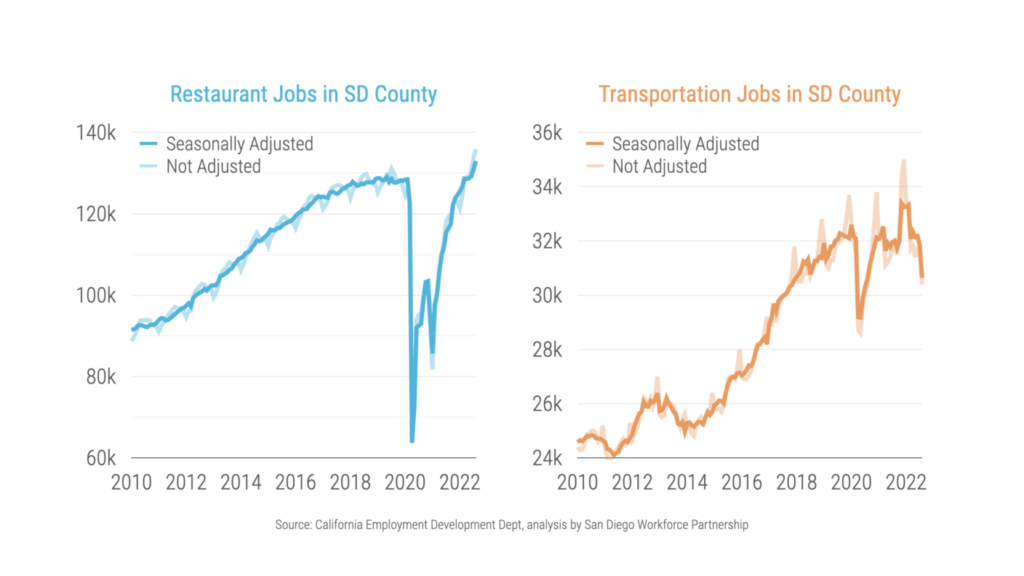Workforce Partnership chief economist Daniel Enemark analyzes August’s labor market trends.
Great News: Unemployment is up!
That might sound like insanity from the chief economist of a workforce development board, but here’s the good news: overall employment has grown and labor force participation is up. In other words, there are more jobs and more people are willing to work. And it’s a lot more people willing to work. Typically (over the last 10 years) in August, our labor force has decreased by about 8,600 people. This August, not only did we not see that typical seasonal dip, but our labor force participation actually rose: there are 10,000 more people in the labor force in August than July!
The addition of 10,000 workers makes our unemployment rate look worse because that rate is calculated as a percentage of the labor force, but we’ve actually added 6,600 jobs. More workers means less inflationary pressure, which is good for everyone. And the current unemployment rate of 3.4% (3.1% seasonally adjusted) is still below the California and US rates, and well below the rate most economists view as a natural target (the “noncyclical rate” or “non-accelerating inflation rate of unemployment”).
All that said, yes, the adjusted unemployment rate did go up last month by 0.3 percentage points, from 2.8% in July to 3.1% in August. And normally up is bad, but this time it just isn’t that simple.

More on the labor force
Phil Blair, executive officer of Manpower San Diego, saw the addition of 10,000 workers as the most important news of the day. “The opportunity for these workers is tremendous and employers are anxious to welcome them. Workers who may have been discouraged or unable to work due to childcare instability or health concerns enter a labor market that has been transformed, especially at the lower end of earnings. Many jobs that used to pay $15 an hour now command $21 or even $24.”
The slowest thing to recover since the pandemic recession has been labor force participation. In July the (seasonally adjusted) size of our labor force was 1.34% smaller than its February 2020 high, but in August it was only 0.09% below. An improvement of 1¼ percentage points might not seem like a big deal, but remember that the unemployment rate is only 3.1%, so a small increase in the labor supply really helps ease the employment crunch. Another thing that could increase our labor supply would be to increase the flow of immigration, a driver of economic growth that San Diego typically disproportionately benefits from.

Big gains and a few minor losses
The largest employment gain was the expected August bump in education jobs. Local Government Education added 4,300 jobs—a 6% increase but exactly the number we’d predict for that time of year. The next largest gain was in restaurants, which have for the third straight month added over 2,000 jobs. And although restaurant employment tends to peak in August each year, 2,100 new jobs was more growth than expected and puts the industry at 135,900—3.7% above its pre-pandemic high.
The largest job losses came in State Government Education (down 1,200) and the transportation industries (down 1,100). Finance & Insurance lost 600 jobs, but no other industry lost more than 500 jobs.

